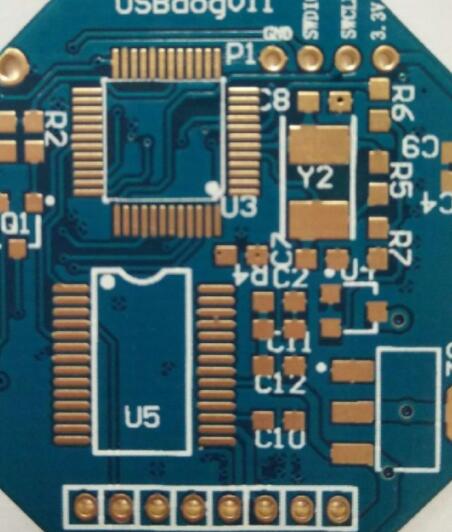Three main factors that cause welding plate defects
1. The weldability of the board hole affects the welding quality
The poor solderability of the circuit board holes will result in solder joint defects, which will affect the parameters of the components in the circuit, resulting in unstable conduction between the components of the multilayer board and the inner line, resulting in the failure of the entire circuit. The so-called solderability refers to the property that the metal surface is wetted by molten solder, that is, a relatively uniform, continuous and smooth adhesion film is formed on the metal surface of the solder.
The main factors affecting the solderability of printed circuit boards:
(1) The composition of the solder and the properties of the solder. Solder is an important part of the welding chemical treatment process. It is composed of chemicals containing flux. Commonly used low melting point eutectic metals are Sn-Pb or Sn-Pb-ag. The impurity content should be controlled in a certain proportion. In order to prevent the oxides generated by impurities from being dissolved by the flux. The function of the flux is to help the solder to wet the surface of the soldered board by transferring heat and removing rust. White rosin and isopropanol solvents are generally used.
(2) The welding temperature and the cleanliness of the metal plate surface also affect the weldability. When the temperature is too high, the solder spreading speed increases. At this time, the activity is high, the circuit board and the melting surface of the solder are rapidly oxidized, causing solder defects, and the surface of the circuit board is contaminated, which also affects the solderability and causes defects. Including tin beads, tin balls, disconnection, poor gloss, etc.

2. Welding defects caused by warpage
Circuit boards and components warp during welding, and stress deformation causes defects such as solder joints and short circuits. Warpage is often caused by the temperature imbalance between the upper and lower parts of the board. For large PCB s, warpage may occur due to the weight of the board itself. Ordinary PBGA devices are about 0.5mm away from the printed circuit board. If the equipment on the circuit board is large, the circuit board will return to its normal shape after cooling, and the solder joints will be stressed for a long time.
3. The design of the circuit board affects the welding quality
In the layout, when the size of the circuit board is too large, although the soldering is easier to control, the printed line is long, the impedance increases, the noise resistance decreases, and the cost increases. Mutual interference, such as electromagnetic interference to the board.
Therefore, the design of the PCB boardmust be optimized:
(1) Shorten the wiring between high-frequency components to reduce electromagnetic interference.
(2) Parts with heavier weight (such as 20g or more) are fixed with brackets and then welded.
(3) Heat dissipation issues should be considered for heating elements to prevent large defects and rework on the surface of the elements. Thermal elements should be kept away from heat sources.
(4) The arrangement of the components is as parallel as possible, which is beautiful and easy to weld, and should be mass-produced. The board is designed as the best 4:3 rectangle. Do not change the line width to avoid intermittent wiring. When the board is heated for a long time, the copper foil is easy to swell and fall off, so avoid large-area copper foil.